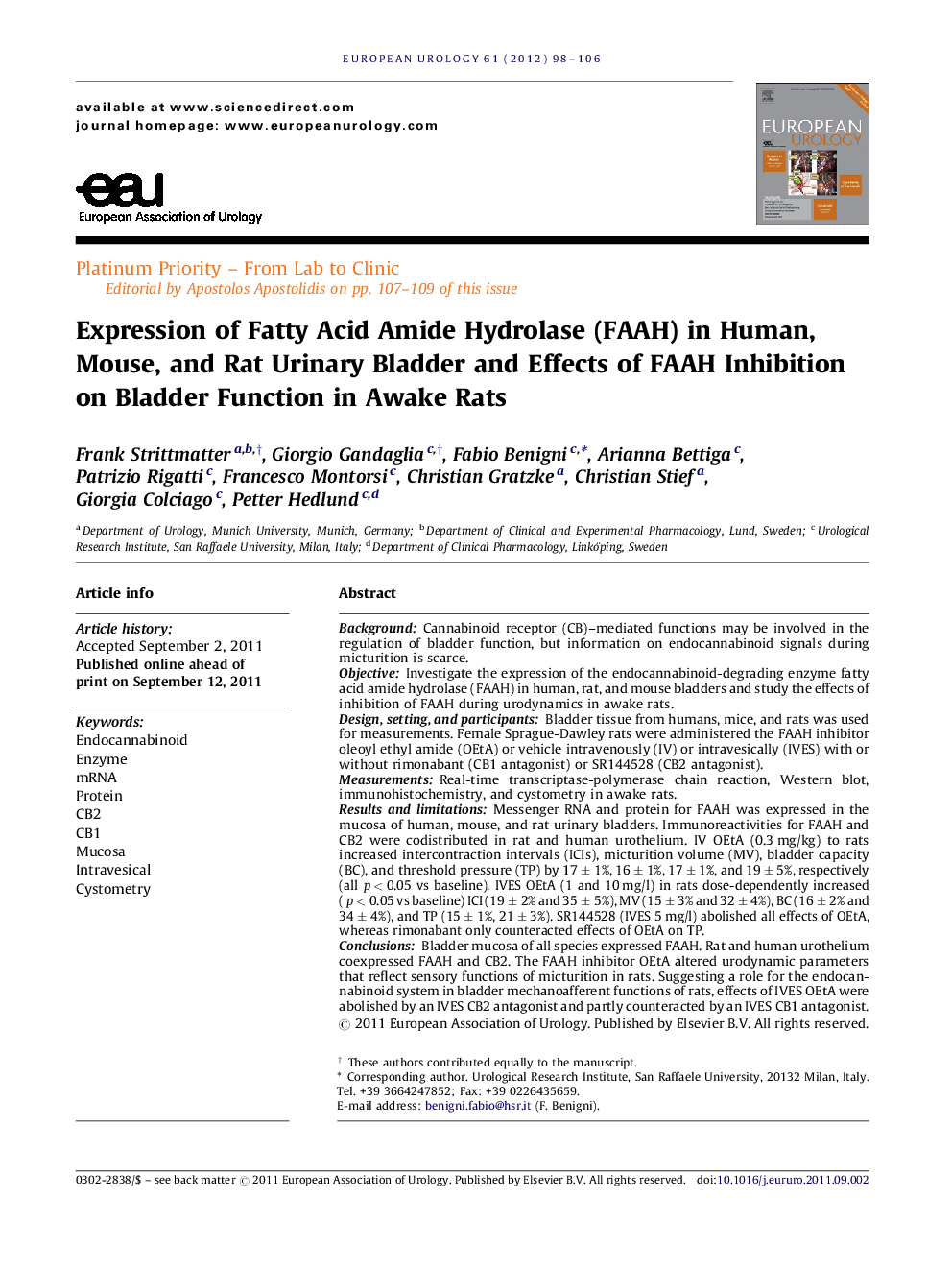| کد مقاله | کد نشریه | سال انتشار | مقاله انگلیسی | نسخه تمام متن |
|---|---|---|---|---|
| 3922893 | 1252992 | 2012 | 9 صفحه PDF | دانلود رایگان |

BackgroundCannabinoid receptor (CB)–mediated functions may be involved in the regulation of bladder function, but information on endocannabinoid signals during micturition is scarce.ObjectiveInvestigate the expression of the endocannabinoid-degrading enzyme fatty acid amide hydrolase (FAAH) in human, rat, and mouse bladders and study the effects of inhibition of FAAH during urodynamics in awake rats.Design, setting, and participantsBladder tissue from humans, mice, and rats was used for measurements. Female Sprague-Dawley rats were administered the FAAH inhibitor oleoyl ethyl amide (OEtA) or vehicle intravenously (IV) or intravesically (IVES) with or without rimonabant (CB1 antagonist) or SR144528 (CB2 antagonist).MeasurementsReal-time transcriptase-polymerase chain reaction, Western blot, immunohistochemistry, and cystometry in awake rats.Results and limitationsMessenger RNA and protein for FAAH was expressed in the mucosa of human, mouse, and rat urinary bladders. Immunoreactivities for FAAH and CB2 were codistributed in rat and human urothelium. IV OEtA (0.3 mg/kg) to rats increased intercontraction intervals (ICIs), micturition volume (MV), bladder capacity (BC), and threshold pressure (TP) by 17 ± 1%, 16 ± 1%, 17 ± 1%, and 19 ± 5%, respectively (all p < 0.05 vs baseline). IVES OEtA (1 and 10 mg/l) in rats dose-dependently increased (p < 0.05 vs baseline) ICI (19 ± 2% and 35 ± 5%), MV (15 ± 3% and 32 ± 4%), BC (16 ± 2% and 34 ± 4%), and TP (15 ± 1%, 21 ± 3%). SR144528 (IVES 5 mg/l) abolished all effects of OEtA, whereas rimonabant only counteracted effects of OEtA on TP.ConclusionsBladder mucosa of all species expressed FAAH. Rat and human urothelium coexpressed FAAH and CB2. The FAAH inhibitor OEtA altered urodynamic parameters that reflect sensory functions of micturition in rats. Suggesting a role for the endocannabinoid system in bladder mechanoafferent functions of rats, effects of IVES OEtA were abolished by an IVES CB2 antagonist and partly counteracted by an IVES CB1 antagonist.
Journal: European Urology - Volume 61, Issue 1, January 2012, Pages 98–106